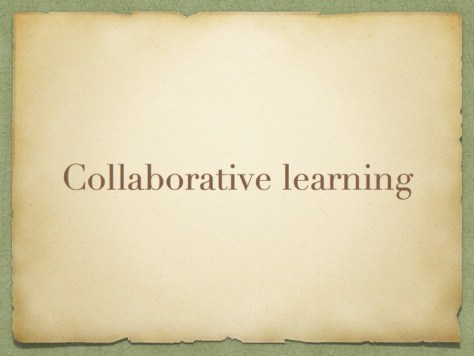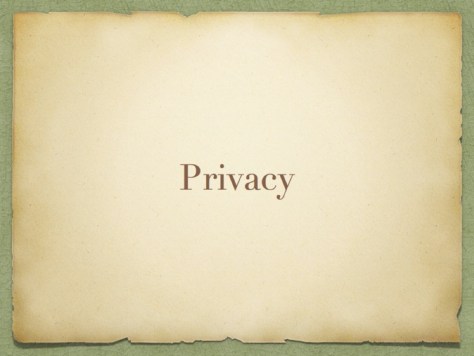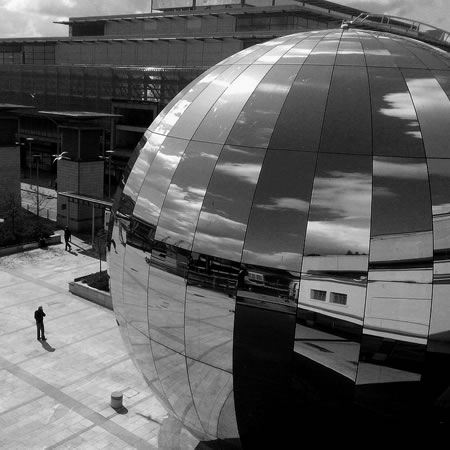On the 2nd October 2009 I was at the ULCC Event, The Future of Technology in Education.
Little did I know the impact that this presentation would have on me, my future career and education in general.
I felt a little intimidated to be invited to talk at the event, we wouldn’t have called it imposter syndrome back then, but I did wonder if I was the right person to talk at such an interesting conference. It certainly had a TED talk feel to it. I must thank Frank Steiner and Tim Bush from ULCC for their support and help and inviting me to talk at this FOTE and future FOTE events.
2009 was quite a year for me, I had won the ALT Learning Technologist of the Year award that year. It was also the year of “The VLE is Dead” debate at the ALT Conference.
The event took place at the Royal Geographical Society in Kensington, which I remember wasn’t the easiest place to get to via the underground. Knowing London better now I think I would probably have just walked across Hyde Park from Paddington to get there. From about 2001 I started going to London a lot for work, well a few times a year, which was considerably more than when I was a lecturer in Bristol. I use to go to London, arrive at Paddington, take the underground, pop up somewhere, go to a meeting or an event, before popping back down into the underground on my way home. These days I visit London a lot more and have spent a lot more time walking around London, so have a much better grasp of the geography of the place. I remember being quite impressed with the place, and that you could see the nearby Albert Hall.
I spent a fair bit of time putting my presentation together, in the end it comprised 82 slides… and I only had twenty minutes to deliver my talk. A challenge that took some doing.
My presentation was entitled The future of learning… The aim of my presentation was to discuss how learning would and could change with the affordances of technological change.
So what of my predictions?
Well we know predicting the future is hard and generally most people get it wrong.
You will no doubt not be surprised that I got a lot of things wrong…
One thing I feel I did get right was that mobile was going to be big and important. I said how I felt mobile was the future. The audience did have a range of mobile devices themselves, but most phones were nothing more than phones that could do SMS and the Snake game. There were a few smartphones out there, but if my experience was to go by, they were clunky and difficult to use. We had the iPhone, but it hadn’t quite had the impact that it has had by today.
We didn’t have the iPad, that would arrive the following year. So no surprise that in my talk at FOTE I didn’t mention tablets
My talk actually started off talking about the past, how we are still impacted and embedded by the past, which makes change challenging and difficult.
I then talked about the present and some of the issues and problems that technology was causing in classrooms and lecture theatres. PAT testing was a real concern for many back then, don’t hear much about it these days in relation to BYOD or learner devices.
One of the challenges I saw back then was how academics and educationalists wanted to categorise learning, so we had e-learning, m-learning, mobile learning, online learning, digital learning, etc….
I said that I thought categorising learning and putting it into different boxes was restricting and that really we should focus on learning and blur the boxes, blur the boundaries.
It was fine to talk about the “boxes” at conferences and in papers, but experience has shown that categorising learning into boxes caused confusion for teachers and academics, who rightly focussed on the word before the learning as a problem to be solved and then found it challenging.
However back then I said, and I still stand by this today, is that learners and academics need to understand the potential of technology and digital to better understand the affordances and opportunities that it can provide for learning. You don’t need to be ab le to do the technology, but you do need to know what it can do.
I also brought in scepticism about technological advances, something I would draw upon in future talks and presentations.
Video (and film) had been used for learning for years, but people were sceptical and convinced that video (ie lecture capture) would stop traditional learning activities. However we know that television didn’t destroy radio, we know that radio didn’t kill newspaper, books didn’t replace folk stories. When we have a new technological development, often the result is a negative impact on existing technologies, but often the result is affordances about the potential of the new technology, enabling access that otherwise wouldn’t be possible.
I also talked about the potential of video on mobile devices. Video cameras were getting smaller and cheaper, the quality was getting better as well. You could buy video cameras which could record HD video, even if it was a challenge to capture and edit it on standard computers of the time. This was before the concept of streaming became mainstream. I showed a Sanyo Xacti camera which was waterproof and dropped it in a jug of water. These cameras could be used in dirty and dusty environments and the washed under the tap!
Mobile phone video has become so much better now. I am still impressed that my iPhone can record 4K video… If only we could get people to record video in landscape!
GPS was usually an option on devices back then, today it is more prevalent in the devices we buy. I saw this as an opportunity, the concept of geo-location based learning was something that felt quite magical at the time. Your device knows where you are, so personalises the learning based on your location. What I missed was how location tracking and would become a very big issue for people.
There was a bit of a backlash against e-Books back in 2009, as people felt that they weren’t as good as “real” books. For me they weren’t a replacement for books, they enabled different ways of reading. For many e-Books and e-book readers enabled a new way to access books and content, that otherwise would mean they wouldn’t have access. I presented on the future of reading at #FOTE10 the following year. I became a bit of an expert on e-books as as result. I presented on e-books at many different events and conferences, as well as writing a chapter in a book, and finally a book on Preparing for Effective Adoption and Use of Ebooks in Education in 2012.
Today e-books are part and parcel off education with easier access to books by students from academic libraries. As I did predict, we didn’t see the end of physical books, we still have bookstores and people still buy physical books.

Back then in 2009 connectivity was either slightly haphazard, or expensive, or both. We had 3G, but it wasn’t widespread, it would be another three years before we saw 4G.
WiFi was there, but it didn’t always work and network congestion would often cause the WiFi to fail. This happened with frequent regularity at events and conferences I attended back then, as delegates killed the WiFi with too many connections.
In the future I felt connectivity wouldn’t just be important, it would be critical for the future of learning.
Today we have really good (and cheap) mobile data, 4G is more available and 5G is starting to appear. Ubiquitous WiFi is certainly there compared to ten years ago, Eduroam has made it easier for people in education to connect when travelling, but WiFi is easily found in most places. This has allowed users to do so much more when travelling and moving about, or just when drinking coffee. I certainly notice how many people are streaming video, having video chat, doing so much more, because they had the connection and the bandwidth to do so.
Mobile often means battery power, and access to charging. Everyone remembers how their Nokia phone would last days on a single charge, today, most people seem to complain how their smartphone battery doesn’t last the day. Batteries may not seem to have got better, they have, just that we demand more power for our complex devices. We have seen significant improvements in battery technology, but we have seen a huge increase in our demand for power on our devices. Streaming video requires more power than reading an e-mail. One thing that has taken time to filter through was the importance of the ability to charge devices. Since 2009 we have seen trains and buses adding power sockets, and USB ports for charging as well. Hotels have added similar sockets. Some lecture theatres now have plug sockets as well.
In my 2009 presentation I talked about the technological penknife.

This is one thing I got very wrong, I thought that the idea that a device that did everything meant it did everything badly. A penknife has multiple tools, but most of them aren’t very good doing the stuff they are designed to do. People would prefer to have specialist devices for specific activities. Why would you have rubbish video from a phone, when you could have a decent HD video camera? Why would you use the rubbish microphone on a device, when a specialist recording device would do it so much better? Well that didn’t happen, in reality we have seen devices become so much better that we don’t need to have multiple devices. We have the penknife, but it’s a really good penknife, really good at everything.
I then went on to talk about change and the importance of managing change. I talked about how change can be a series of small steps, but noted the importance of missing steps, endless steps and steps that trip you up.
These slides were really where I started to understand strategy and writing strategies much more. This certainly helped me in future roles and influenced heavily the design of certain aspects of the Jisc Digital Leaders Programme in which I was part of the research and development team led by Lawrie Phipps.
I talked about activity, technology should never be about the technology, it needed to be about how it could enhance or improve activities. Or where the affordances created new opportunities for different activities. We still have a perception that we shouldn’t talk about technology first, though sometimes I think we should.
Technology allow for flexibility, flexible curriculum, flexible approaches to delivery, flexible learning. I think we have made a little progress here, but so much more is possible these days. The technology enables flexibility, but that doesn’t mean it will just happen, there is so much more that needs to happen to enable flexibility.
Back then I felt sharing was important, not just sharing content (as in open) but also sharing ideas, concepts and approaches. Not that this didn’t happen, but it was difficult to do so. Today it is much easier to share than it was back then, so much so, I think we have forgotten about the time when this didn’t happen.
I talked about the importance of working collaboratively. Since the talk online tools have made it so much easier to collaborate. Collaboration across institutions (and countries) is so much easier these days. Tools such as Slack enable groups to talk and work together.
I talked about innovation, celebrating ideas. Innovation doesn’t always mean better, it means different or new. Following on from that I talked about experimentation and encouraging it within our institutions.
If you want innovation, then it needs to be embedded into the strategy, rewarded and not penalised when things go wrong. It needs to be done in collaboration with learners not done to them. I think we are seeing much more innovation and collaboration these days, and the student voice is helping to inform developments and ideas.
I said we need to re-think assessment, technology was going to have an impact. I think it has, but not in the way we thought it would. We try and use technology to “fix’ assessment today, rather than re-imagine how we assess.
I talked about culture and how culture can enable change, but also frustrate it. Culture is about what and who we are, it’s the sum of the people within an organisation. This was something we covered years later in the Jisc Digital Leaders Programme.
I have written about the importance of culture and strategy in this blog post on writing strategies.
I have always seen technology as a solution to a problem. Technology in itself is not the problem needing to be solved. This was something that I wrote about in 2018.
I finished the presentation about talking about the future and how the future was about the learner, the student. It was about how they wanted to learn, where they wanted to learn, what they wanted to learn and with whom they wanted to learn. Why did we need to think about the future, it was because we needed to think about the learners, then, now and in the future.
So did I predict the future?
No.
It certainly though had a huge impact on my future, some of which I have outlined above. As a result of this talk I was invited to speak at a range of events and conferences on the future of learning and a range of mobile learning events. I spoke the following year at FOTE 10 about the future of reading, which resulted in me doing much more in the e-book space.
So there is also a video of me (looking much younger) presenting, if you want to watch what happened…

































